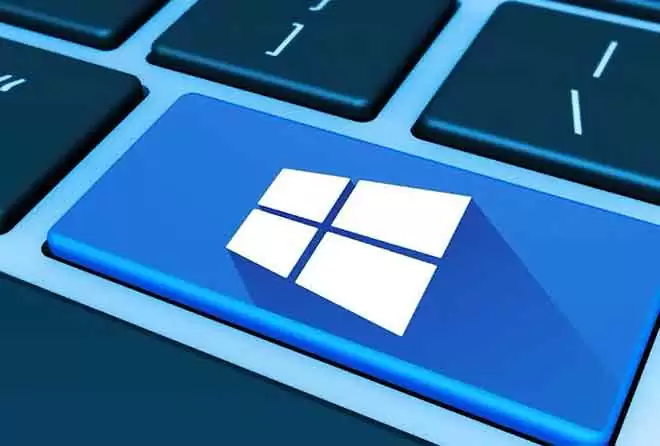Learn how to restore Windows 10
How to reset your Windows 10 PC, to help you troubleshoot or prepare to sell a PC. You can use the Settings program to factory reset a Windows 10 computer to default settings and wipe the hard drive at the same time.
A full factory reset will erase all programs and personal files, so make sure you have a backup ready before doing this. A Windows 10 reset should be the last resort for troubleshooting a problematic Windows computer. You should factory reset your computer before selling or giving it away.
Need to completely reset your Windows 10 PC so it’s as fresh as the day you took it out of the box? Try a factory reset. You may need to do this due to a major problem with Windows and restoring may be the only solution.
Or you are preparing to give or sell your PC and want to clean it up, removing all your programs and personal files. Either way, you can reset PC from Settings.
What’s the difference between a Windows 10 factory data reset and a clean boot?
A Windows 10 PC recovery is designed to reinstall the Windows operating system in its original OEM state at the time of purchase. Therefore, all PRE-INSTALLED third-party applications and licenses provided with the device will be reinstalled. A fresh start of Windows 10 is similar to a factory reset, except it does NOT keep OEM and third-party software and licenses pre-installed – reinstall Windows 10 from scratch.
Is it good practice to reset Windows 10?
Yes, it’s a good idea to restore Windows 10 if possible, preferably every six months whenever possible. Most users only resort to a Windows reset if they have problems with their PC. However, tons of data is stored over time, some with your intervention but most in your absence.
The most commonly collected data includes operating system activities and personal information. Actions such as browsing history, social likes, social sharing, news views, search history, viewed videos, automatic document saving, temporary backup files, PDF view history and more are stored in the system and used for purposes specific.
Data can accumulate rather quickly and keep spinning and slowing down the more you use your PC. If left unattended, data can be obtained from malware, spyware, and other means. Resetting your PC (as you might your Android smartphone) ensures optimal performance and stability on an ongoing basis.
Does a Windows 10 reset save documents, music, pictures and contacts?
Yes, Windows 10 keeps personal folders like Documents, My Videos and My Contacts when you perform a Windows 10 reset. However, you MUST specify that you want to save your personal data when prompted. If not, the reset will erase everything except the OEM / pre-installed software and start from scratch.
Does Windows 10 reset keep game data?
Typically, a Windows 10 reset does NOT save game data or games. The process is meant to provide a clean Windows OS, but it offers an option to save some data, such as documents, images, etc. Independently installed or third-party games will not be backed up.
If you have games from the Microsoft Store, your save data may be recovered when you reinstall it, but this depends on the game’s features and options. Microsoft does not personally manage game saves in the Microsoft Store.
It is always best to back up all valuable game data before restoring your PC and this will require unique research and methods based on the game saves and settings you need to preserve.
Does a Windows 10 restore save custom drivers?
No, a Windows 10 restore does not preserve any drivers. The operating system reinstalls the default drivers or the ones that Microsoft has in its database, so you will have to reinstall the third-party or custom drivers yourself. 6 software to update PC drivers Windows 10, 8, 7
Does Windows 10 computer recovery require updates again?
Yes, a Windows 10 reset doesn’t preserve updates, so you’ll need to reinstall them. However, the latest featured update includes all previous updates so it’s not that bad.
How to restore Windows 10 to factory settings
Before you start resetting Windows 10, make sure you have a copy of all your important files – this procedure will completely erase your hard drive, deleting all programs and data stored on it.
- Click the Start menu, then click Settings (the gear icon above the power icon).
- Launch Settings from the Start menu.
- Click “Update & Security”.
- In the left pane, click “Restore”.
- The reset page is where you start the process of restoring your computer to factory settings.
- In the Reset this PC section at the top, click “Get started”.
- Now follow the steps to complete the reset. You will be asked if you want to keep your files on your PC or remove everything. Click “Remove All” if you really want to restore your computer to factory settings, but once again make sure you’ve backed up any files you want to keep in another location.
- For a true factory reset, click “Remove All”.
- When Windows asks if you want to clean the drive, click “Remove files and clean the drive”, especially if you plan to give your computer to someone else. This will ensure that the deleted files cannot be recovered.
- Click “Reset”.
Windows it will take several minutes to reset PC and clean hard drive thoroughly. When it reboots, you’ll have a pristine PC.
















